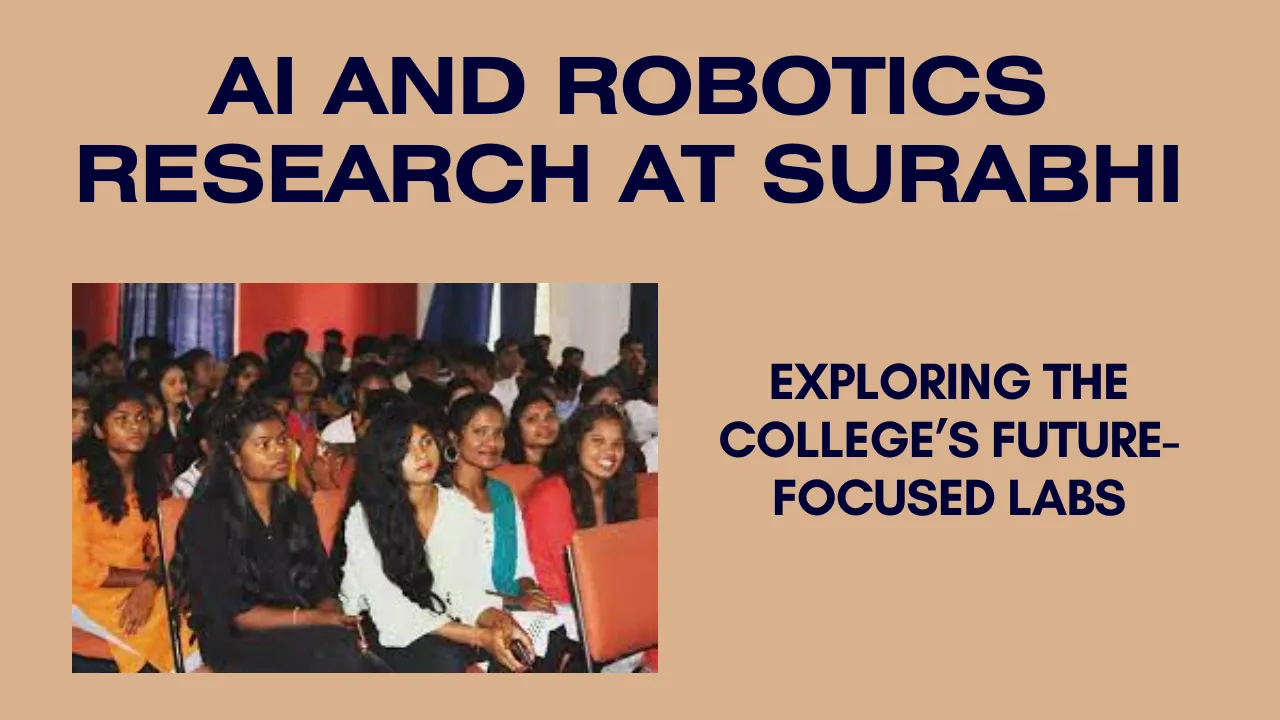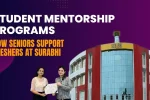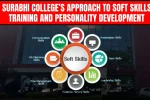AI and Robotics Research at Surabhi: AI and Robotics Research at Surabhi isn’t a futuristic dream—it’s a current, thriving reality. Inside these labs, ideas aren’t just discussed; they are built, tested, and refined. With the rapid rise of automation, artificial intelligence, and data science, Surabhi has placed itself at the forefront by empowering students and faculty to create meaningful, transformative technology.
This article uncovers how Surabhi’s labs nurture a culture of innovation. We explore AI-driven projects, robotic systems, interdisciplinary teams, and hands-on research that connects academic theory with practical solutions. From self-learning machines to autonomous bots, you’ll discover how Surabhi is preparing the engineers of tomorrow.
AI and Robotics Research at Surabhi: A 100–120 Word Spotlight
AI and Robotics Research at Surabhi bridges complex computing with real-world engineering. The college has built dedicated labs focused on machine learning, computer vision, and autonomous robotics. These spaces are where student teams brainstorm, design, code, and construct systems that interact with the world—like smart drones, medical AI, and precision farming bots. Faculty and researchers guide projects that push boundaries, integrating software intelligence with mechanical design. Whether using neural networks to recognize patterns or crafting hardware that responds to sensors, the labs offer students deep exposure to both AI theory and robotic implementation. It’s a space for bold ideas, continuous learning, and innovation with impact.
Overview of Surabhi’s AI & Robotics Labs
| Lab / Facility | Focus Areas | Example Projects |
| AI & ML Lab | Neural networks, deep learning, NLP | AI-based diagnostics, predictive models |
| Robotics Workshop | Embedded systems, actuator design | Autonomous transport, robotic arms |
| HMI Lab (Human-Machine Interaction) | Assistive tech, gesture-based systems | Smart home automation, wearable robotics |
| IoT & Sensor Lab | Real-time data, wireless communication | Smart agriculture, environmental monitoring |
| Innovation Arena | Collaborative prototyping, interdisciplinary R&D | AI-driven logistics bots, drone swarms |
Advanced AI & ML Lab
The AI and ML Lab is where algorithms come alive. Students and researchers work on neural networks, natural language processing, and pattern recognition. Using tools like TensorFlow and PyTorch, they create predictive models for industries like healthcare and finance.
Projects such as AI-driven diagnostics help analyze patient scans, while sentiment analysis engines gauge user feedback for better service design. The lab is fully equipped with GPU-enabled systems and cloud platforms to train large datasets, giving students direct exposure to how real AI systems are built and deployed.
Robotics Workshop
This workshop is where mechanical meets digital. Students design robotic prototypes using servo motors, Arduino boards, and CAD modeling. They build systems like robotic arms for material handling or path-following bots for delivery simulations.
One standout innovation: an autonomous transport robot that navigates college corridors delivering supplies without human input. This involved motion sensors, line-tracking algorithms, and power-efficient design—proving that creativity thrives when circuits meet code.
Human-Machine Interaction Lab
The HMI Lab focuses on intuitive tech—where people interact seamlessly with machines. Students explore gesture-based control, voice activation, and assistive robotics.
One team developed a wearable robotic arm that responds to muscle signals, aiding people with mobility challenges. Another created a voice-controlled smart lighting system integrated with AI for energy efficiency. These systems don’t just showcase innovation—they represent compassion-powered design that aims to improve lives.
IoT & Sensor Lab
In the IoT Lab, real-time intelligence takes center stage. Here, students integrate sensors, microcontrollers, and cloud platforms to build smart systems. Projects include:
- Smart irrigation systems that detect soil moisture and automate watering
- Air quality monitors that collect and report real-time environmental data
- Livestock trackers that monitor health and movement via wireless devices
Students learn embedded programming, network configuration, and real-time data visualization. This lab supports scalable, impactful tech—especially in areas like agriculture and environment.
Innovation Arena
The Innovation Arena is a collaborative space where students from all disciplines prototype and co-create. It’s where AI models meet robotics frames and sensor data drives decision-making.
Here, students built an AI-powered drone swarm for mapping large terrains—perfect for disaster response or land surveying. These interdisciplinary projects are guided by design thinking, agile methods, and a mentorship-rich culture. The Arena fosters creative risk-taking and practical implementation, not just research for research’s sake.
Student-Led Tech Initiatives
Beyond labs, Surabhi’s AI and robotics ecosystem thrives through tech clubs, coding nights, and demo days. The AI Club hosts regular deep learning challenges, while the RoboSociety runs hands-on builds and robotics battles.
Hackathons like “CodeCraft” bring together teams to build functional prototypes in 48 hours. Recent winners developed an AI-powered sign language translator and a robotic delivery assistant. These events cultivate teamwork, pressure-based problem solving, and real innovation.
Industry Collaborations and Research Exposure
Surabhi partners with firms in automation, AI, and software development to give students real-world exposure. These collaborations offer:
- Industry-led workshops on cutting-edge tools like ROS (Robot Operating System)
- Sponsored capstone projects aligned with business challenges
- Internship pipelines for AI analysts, robotics engineers, and IoT developers
These partnerships ensure that student innovations are aligned with market needs and that graduates are workforce-ready.
Two Highlighted Integration Areas
- AI + Embedded Robotics
Merging smart algorithms with mechanical systems, students build bots that think, decide, and act independently. - Sensor-Driven Automation
Using real-time data from IoT sensors, systems are programmed for precision farming, traffic monitoring, and smart energy use.
FAQs
1. What kinds of students can join AI and robotics projects?
Students from Computer Science, Electronics, and Mechanical backgrounds are welcome. Projects are interdisciplinary and open to all with interest and dedication.
2. Are there opportunities to publish research?
Yes. Many students co-author papers with faculty and present at national conferences or publish in journals related to AI and robotics.
3. Is prior coding experience required?
Not strictly. Beginners can start with workshops and tutorials offered by the AI Club or robotics teams and gradually build up skills.
4. How are projects evaluated or recognized?
Projects are showcased at demo days, reviewed by faculty, and sometimes submitted to national competitions. Top work receives awards and internship referrals.
5. Can students start their own startups based on lab work?
Absolutely. Surabhi supports tech entrepreneurship through incubation mentorship, pitching contests, and seed funding guidance.
Final Thought
Surabhi’s dedication to AI and Robotics Research is more than just a nod to future trends—it’s a commitment to creating ethical, capable innovators. Students leave not just with skills but with real-world solutions under their belt. If you’re excited by the idea of building smart bots, solving big problems with machine learning, or working on technology that matters—this is your call to action. Explore Surabhi’s labs, join a workshop, or bring your own idea to life. The future is here—build it with us.






